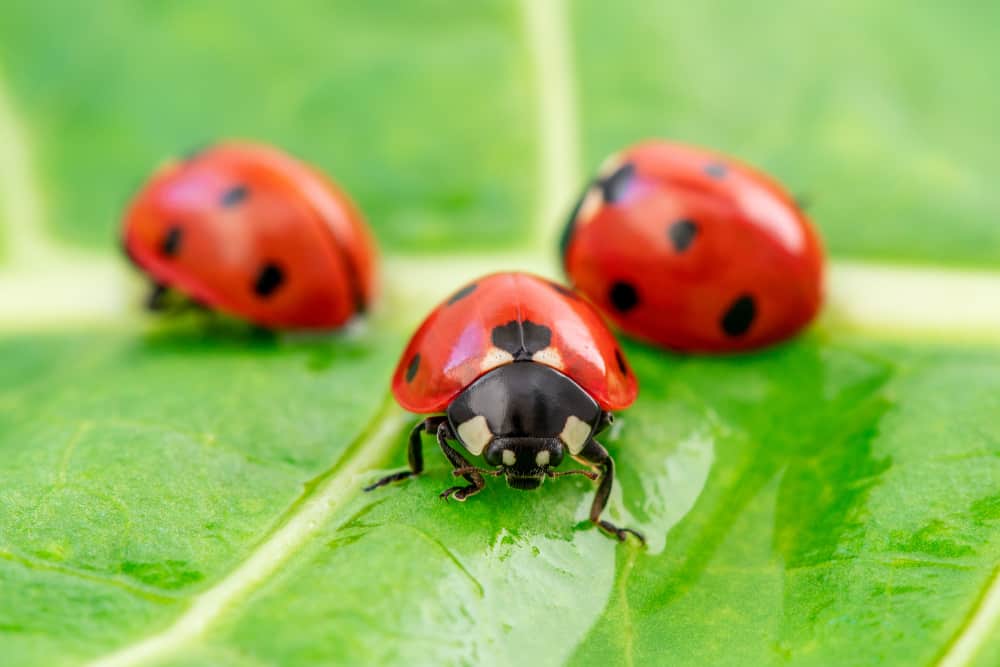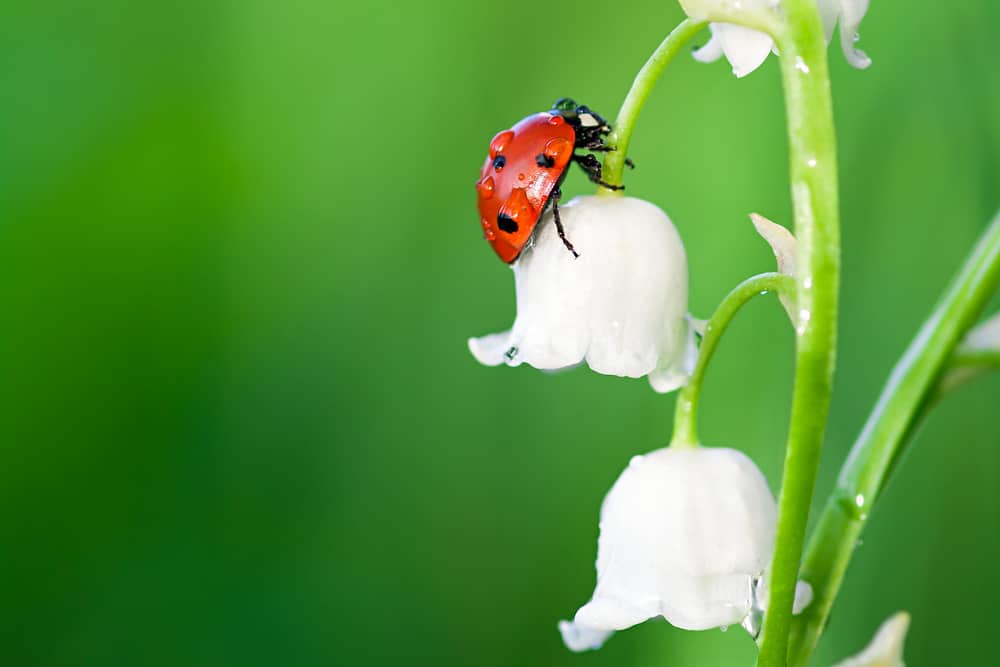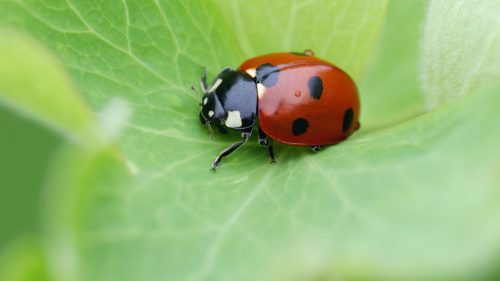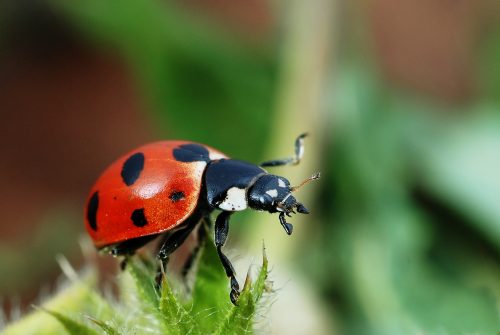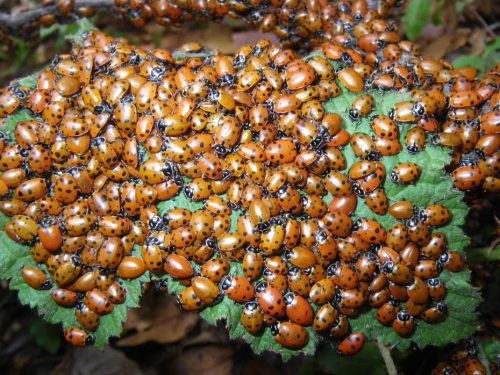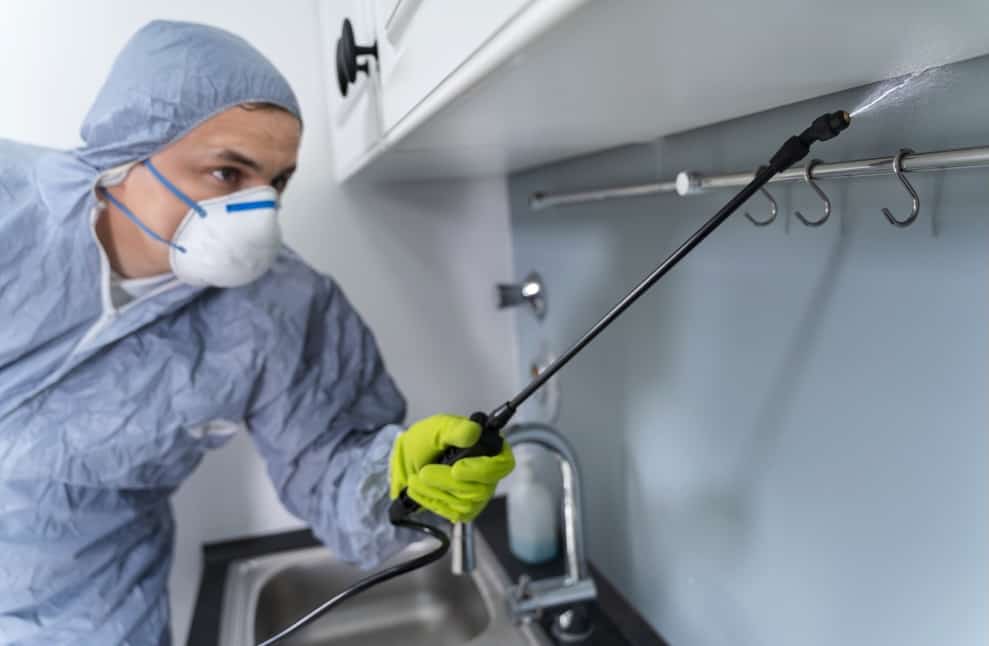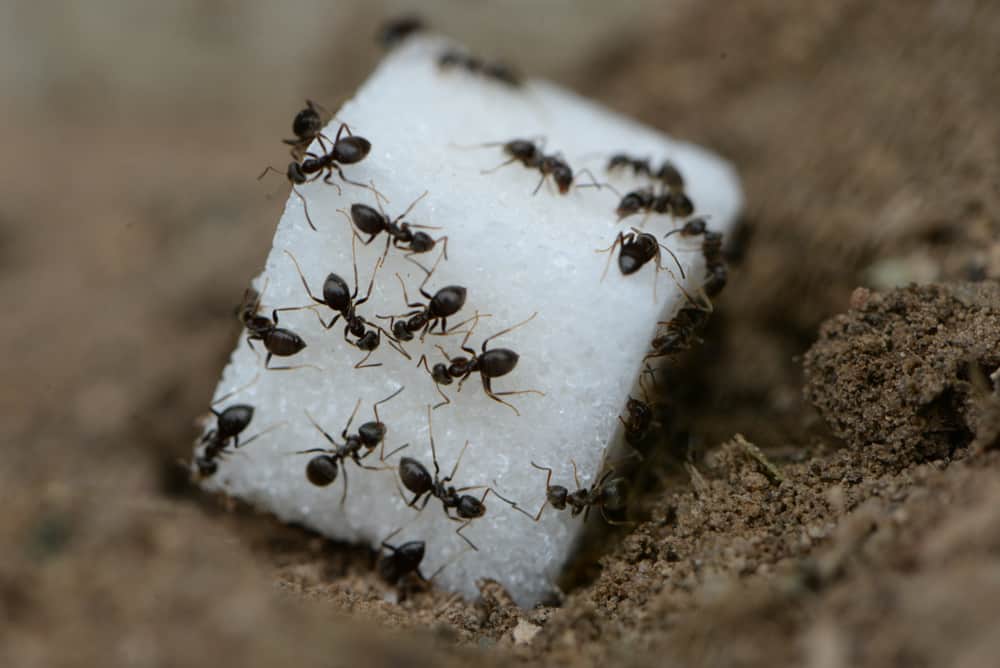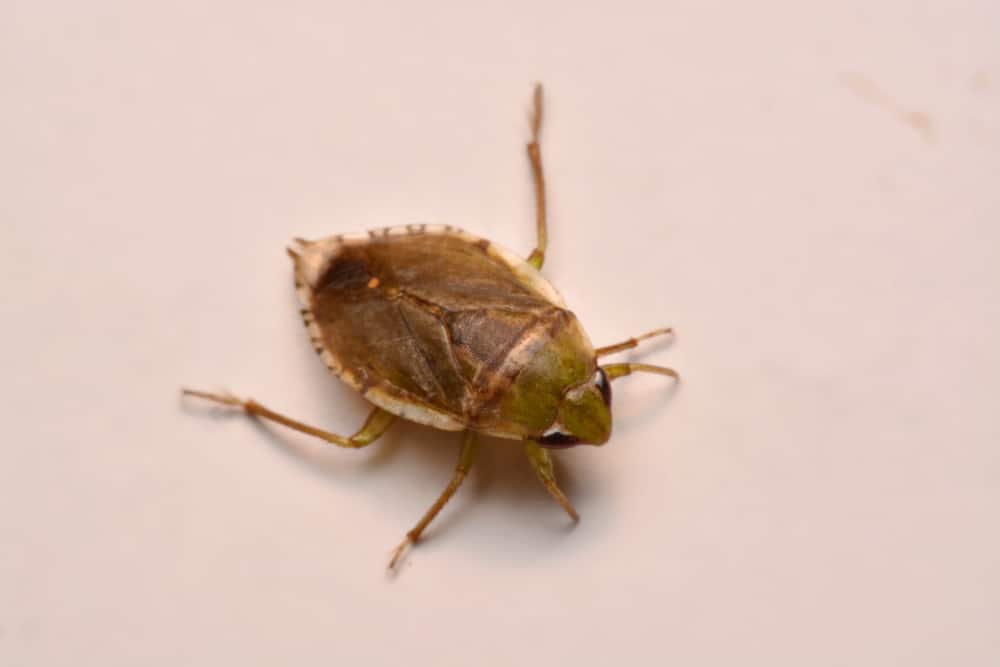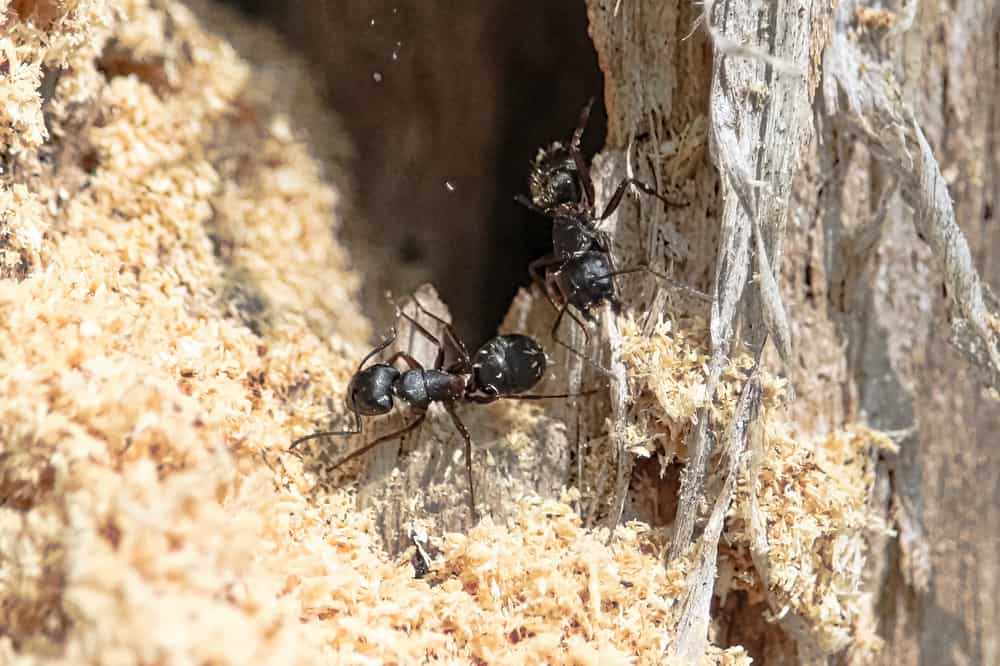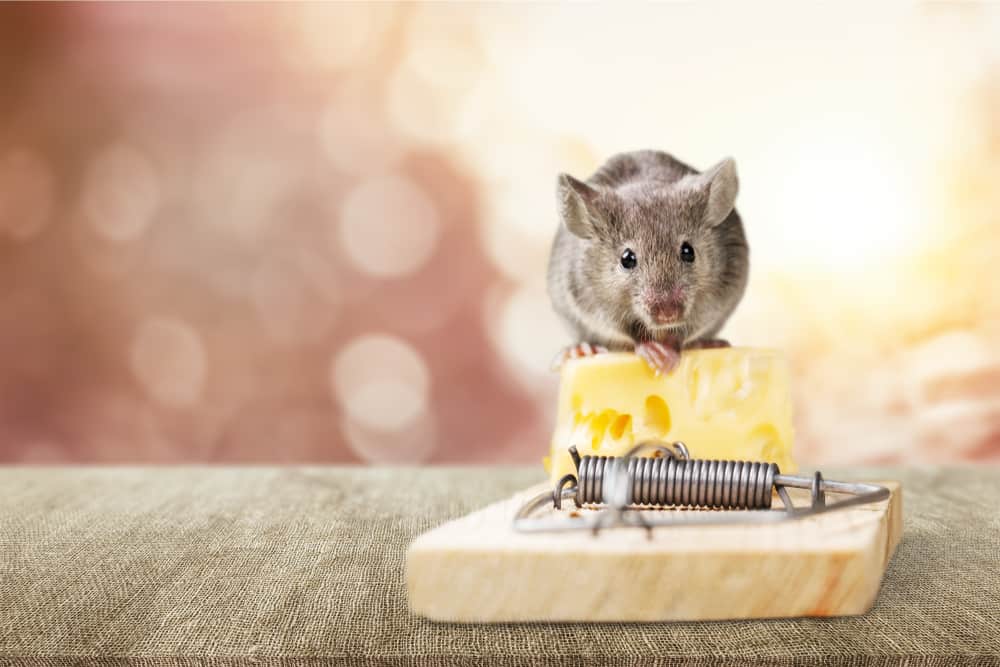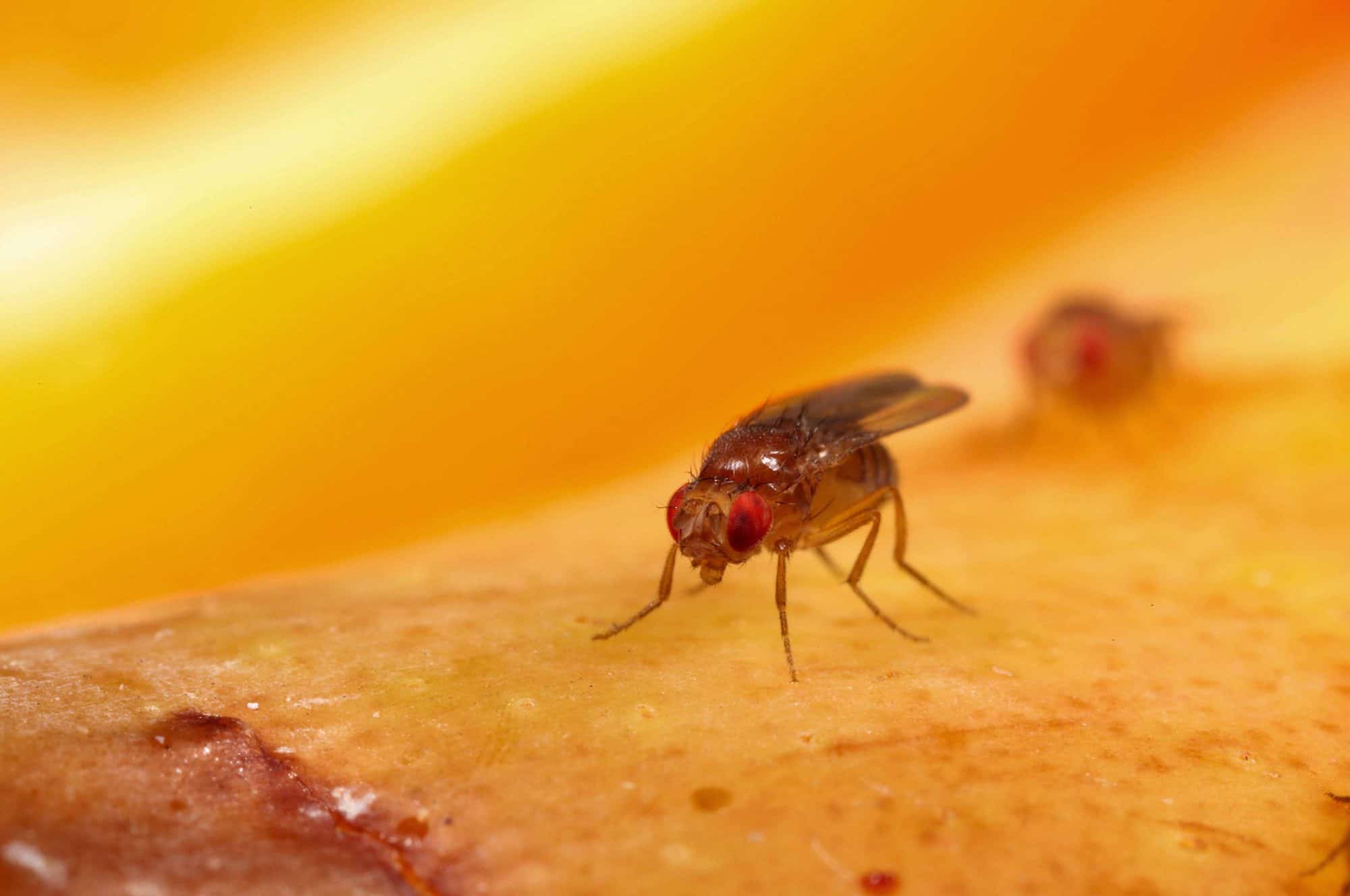In a garden, having ladybugs around is a good thing. They naturally feed on insects that can damage plants, most notably aphids.
They’re also harmless to humans. Ladybugs don’t bite or sting, and they aren’t poisonous.
But that doesn’t mean ladybugs aren’t always a problem…
These ordinarily helpful insects can turn into a major nuisance if they infest your home.
Page Contents:
What Are Ladybugs?
Ladybugs, also referred to as “ladybirds,” are a species of insect belonging to the scientific family Coccinellidae. They are a species of beetle that is most commonly found in North America and Great Britain.
While they commonly appear with red wing covers, ladybugs can also appear in various shades of orange or yellow. They are usually covered with spots, but sometimes ladybugs can either have stripes or no patterns at all.
Ladybugs are considered a beneficial insect by farmers and gardeners. This is because they hunt aphids and other herbivorous insects that eat crops or flowers. Ladybugs have been observed laying their eggs in aphid colonies, which would give their larvae a food source upon hatching.
They are always most active between spring and fall.
As the temperature drops, ladybug colonies will enter hibernation until the winter months end.
How Long Do Ladybugs Live?
In the wild, a ladybug has an average lifespan of just about 1 year. Females will lay their eggs during the warmer months of the year, where they will hatch after 7 days.
Ladybug larva will stay in the larval phase for a month, slowly growing and developing. They will then enter the pupal stage and continue growing for another 2 weeks.
After this stage, the ladybug is considered fully grown.
Natural predators of ladybugs include birds, spiders and wasps. However, ladybugs have a natural deterrent…
Their bright red wing covers.
In nature, bright colors are often associated with toxins, which may ward off certain predators from devouring the ladybug right away.
Home Remedies to Get Rid of Ladybugs
If you have a ladybug infestation but you don’t want to spend money on pest control, there are several DIY home remedies that are just as effective. These methods are extremely simple since they require only the most basic materials.
Vacuuming is an excellent way to get rid of large ladybug colonies. Simply vacuum up the insects, then empty the vacuum bag someplace outside.
Using soapy water has two unique benefits. First and foremost, the scent of soap will either deter ladybugs and drive them elsewhere, or it will outright kill them. Once an infestation has been cleared, washing the area with soapy water also eliminates pheromone trails that could potentially attract more ladybugs.
You can also use diatomaceous earth, a powdery substance commonly used in DIY pest control for bed bugs. Ladybugs that walk through diatomaceous earth will have the shards embedded in their exoskeleton, slowly dehydrating it and killing them.
How to Get Rid of Ladybugs in Your Garden
Although ladybugs can be beneficial for a garden’s health, perhaps you don’t want them lurking around anyway. After all, any ladybugs nesting in a garden will likely migrate indoors for the winter, causing an infestation.
The secret to driving them out of your garden? Plant and grow numerous Mums.
Ladybugs naturally detest the fragrance of Mums. These flowers also bloom in the autumn, right when ladybugs are preparing for hibernation in the winter.
Simply plant a few before fall sets in, and any ladybugs in your garden will go someplace else for the winter.
Scented Objects to Get Rid of Ladybugs
Like many insects, ladybugs are repelled by the scent of certain objects. You can leave these in strategic places throughout your home, where ladybugs are most commonly found.
Ladybugs can’t stand citrus fruits. Chemicals found in fruits like oranges, limes and lemons are a natural deterrent to many insects, including ladybugs.
You can leave citrus peels around your home, or use scented candles and oils, to drive them out.
Mint is another plant that ladybugs aren’t fond of.
While the scent is refreshing to humans, it can overwhelm a ladybug’s sense of smell. Mint oil or peppermint oil can be used to great effect when removing ladybug colonies.
Another plant that ladybugs detest is lavender. Lavender contains a compound called linalool, which overwhelms an insect’s senses to repel them. Lavender-scented candles or oils should be placed throughout your home to deter ladybugs.

